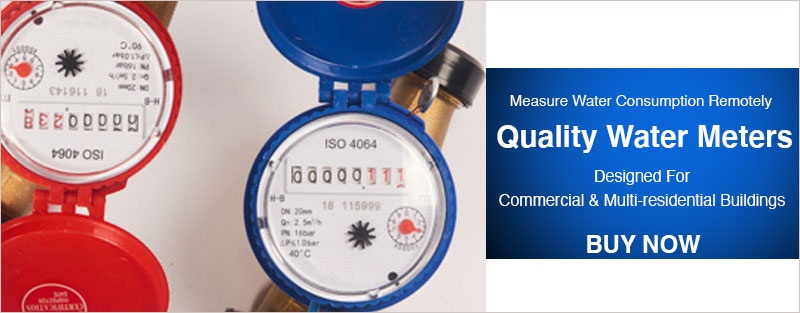Pulse outputs in metering are electric signals generated at the meter that require an external pulse counter to record and store the pulses. They are produced using a solid-state electronic component or transition from one to the other or a mechanical mechanism that open and close a contact.
Every pulse requires a specified amplitude before the output signal can be measured, such as a complete cycle, a dwell time, and transition back to the original or the off-state. These pulses measure an equivalent turn of a dial in a mechanical meter or a disc like in old electric meters, and each pulse represent an exact quantity of volume, or energy which may be in kilowatt-hours or watt-hours.
There are three main types of pulse outputs - high-frequency pulses, switch closure outputs, and low-level AC pulses.
1. High-frequency
High-frequency pulses are also known as square waves. These are the most common outputs for a variety of available sensors. The high-frequency is measured by a terminal using a pull-down resistor. This resistor makes sure that a 0 voltage frequency is present in between the pulses. Once the voltage rises to a set value, such as 5 V, it remains high for only a short time then quickly falls to a neutral ground value. These voltages appear rectangular, similar to a series of rectangular-shaped waves.
Switch closure
Switch closures outputs or mechanical switches and some time magnetic switches also called Reed Switches are switches that complete or close a circuit. They do not actively drive a pulse, such as the high frequency above. However, like high-frequency pulses, pulse counters also have a resistor, but instead of pulling down, the switch closure has a pull-up feature. Since power needs to be placed in the circuit while limiting the current to protect the switch; the mechanical features will bounce contact to the original open position so that the pulse passes from one wire to another when the switch is closed.
Low-level AC
The low-level AC pulses are signals. These signals move between positive and negative voltages. They are typically seen on anemometer outputs and appear as a sine wave. This type of signals require specialized equipment and are not common in sub-metering.
Open Collector and Open-Drain
It is very important to understand the difference between the two. Particularly when selecting your pulse data logger to avoid wiring problems.
The open collector and open-drain outputs are generated with a solid-state switch that can be read as switch-closure pulses. These pulse-type outputs are not mechanical, do not need a debouncing filter (like in some reed type switches) and can be generated at a higher frequency for higher resolution. Both the open collector and open-drain outputs use a pull-up resistor.
Frequency pulses that do not exceed the switch closure limit can be read as high-frequency pulses with a pull-up resistor.
Always check the data logger specification sheet to make sure that the terminals match the pulse type and maximum frequency. Mismatched terminals and types do not indicate the correct measurements. Make sure to always to check the maximum current and voltage of the output transistors, or the mechanical contact ratings. Keep in mind that you will not be able to switch to a full supply current without a pull-up resistor.


